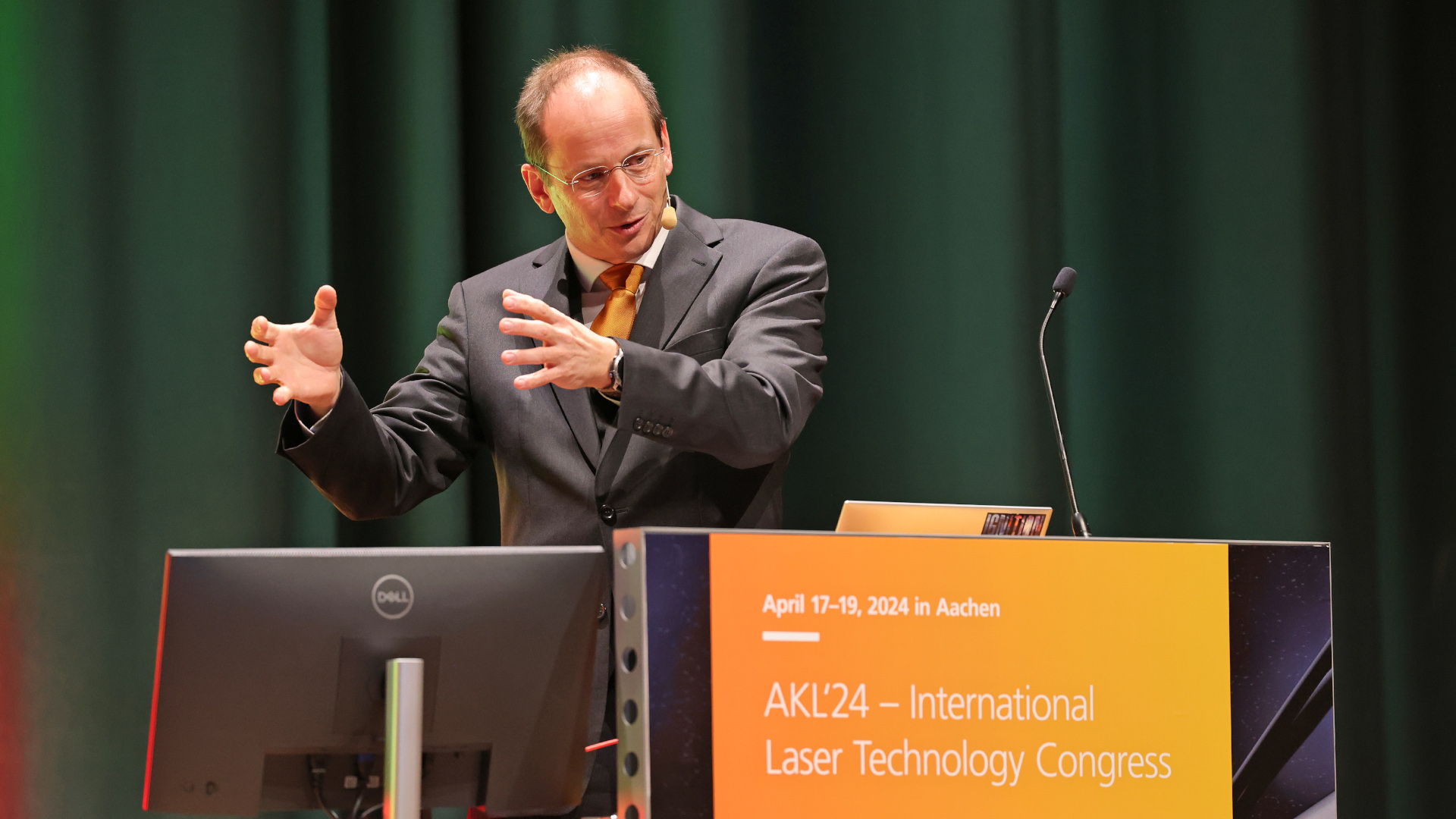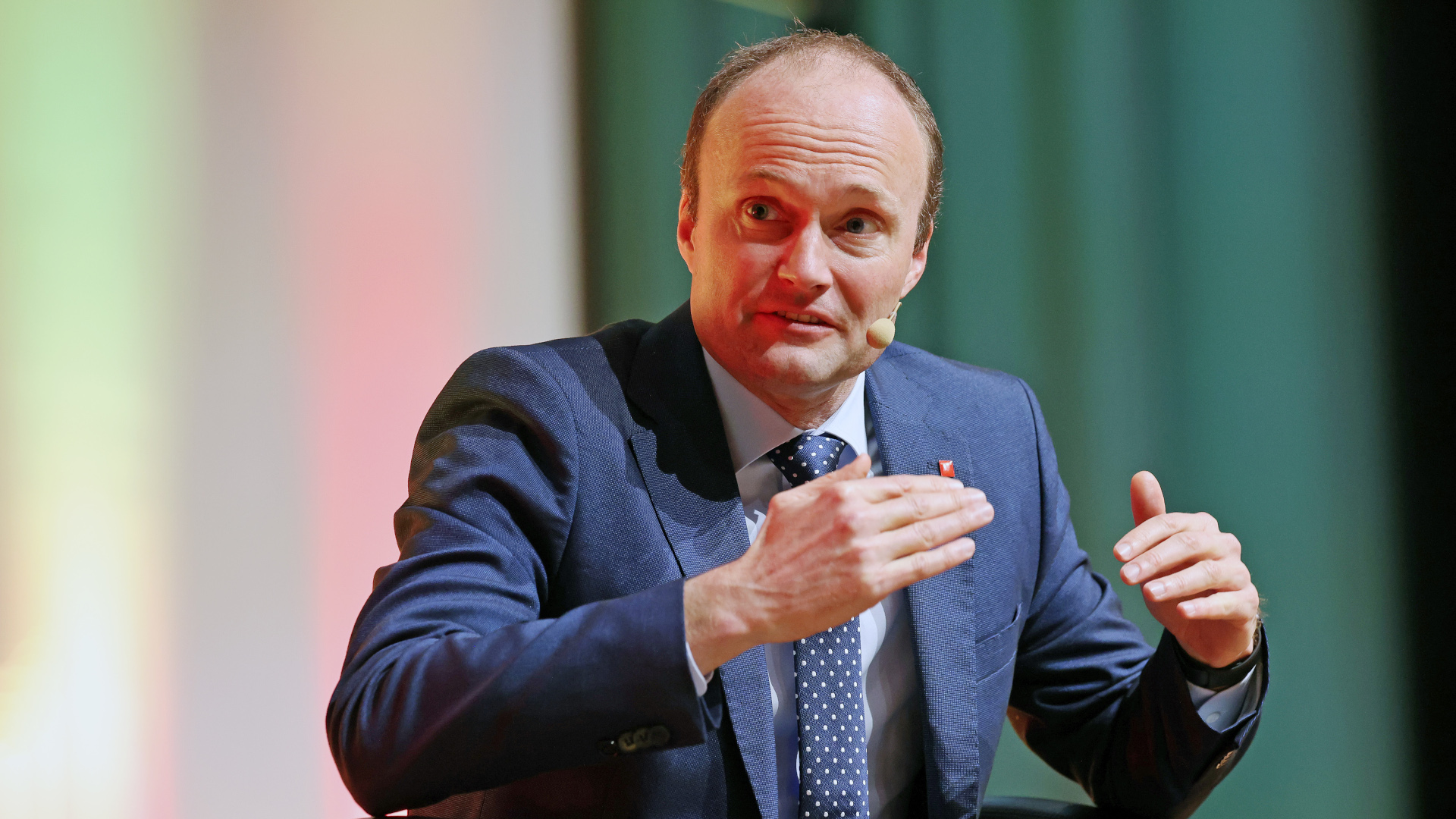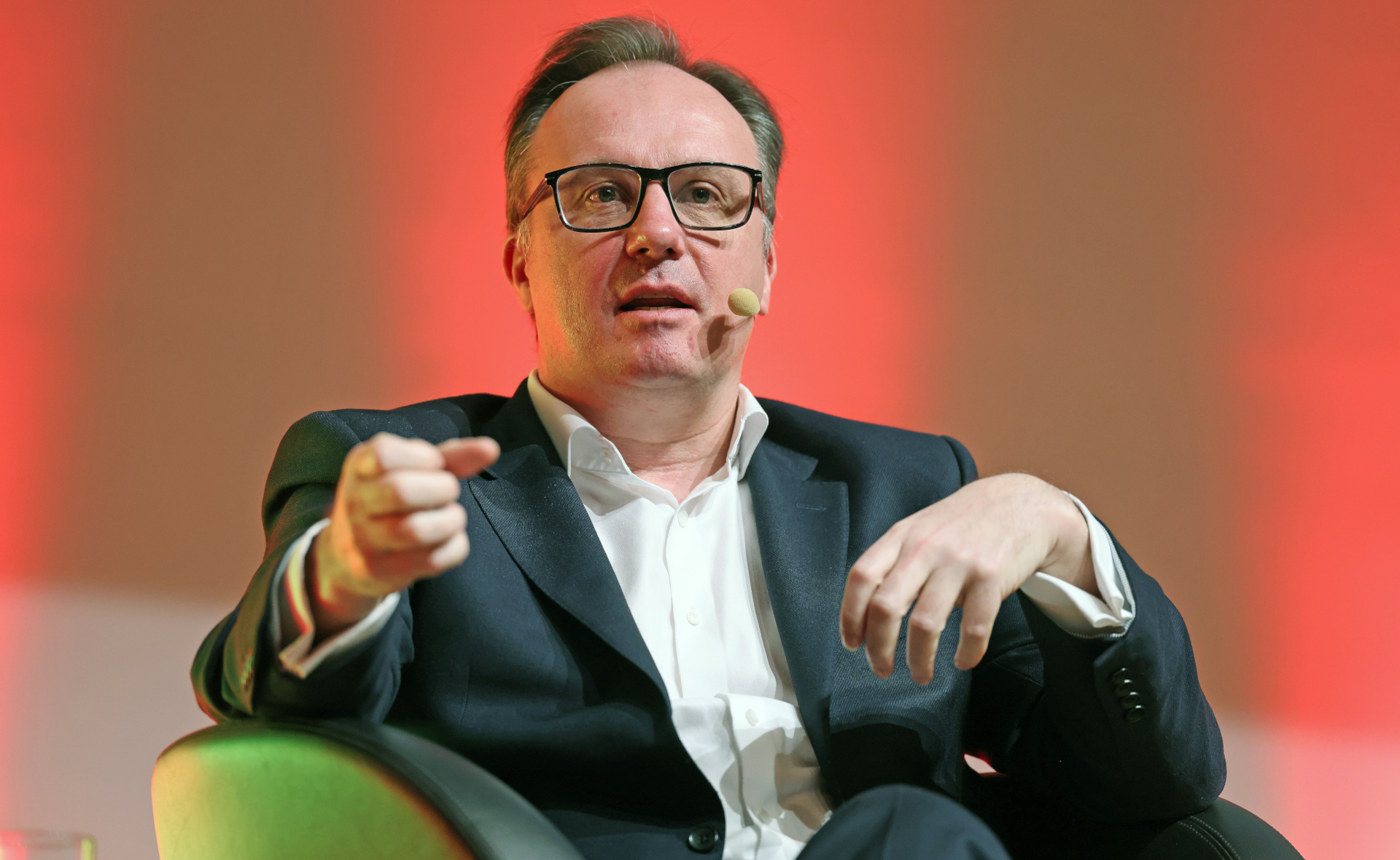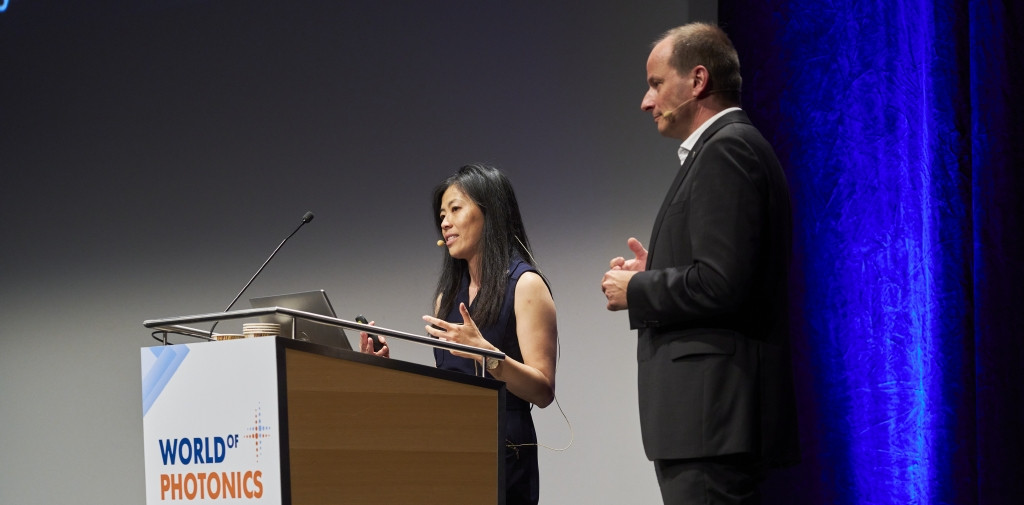
With 525 participants and 80 speakers from 21 countries, a fully booked exhibition accompanying the conference and 60 “Laser Technology Live” demonstrations in the laboratories of the Fraunhofer Institute for Laser Technology ILT and RWTH Aachen University, the “AKL — International Laser Technology Congress” has fully confirmed its reputation as the leading forum for the European laser industry. The focus was on innovations for established laser applications as well as potential billion-euro markets of the future – including cyberphotonics, quantum technologies and laser-ignited inertial fusion energy (IFE). Another highlight: the Gerd Herziger session.
“The laser has not been fully researched. On the contrary – 60 years after its invention, things are only just getting started!” said Prof. Constantin Häfner, Director of Fraunhofer ILT in Aachen, in his closing speech at AKL’24. Looking ahead, he sees huge, completely untapped markets for photonics with a turnover potential of many hundreds of billions of euros: “Quantum technologies, sustainability, secondary sources, cyberphotonics and inertial confinement fusion”. Häfner’s list was also a look back at the top themes of the “AKL – International Laser Technology Congress”, which attracted 525 participants, 80 speakers and 58 exhibitors from 21 countries to Aachen in mid-April.
Influence of digitalization and AI on value creation and business models

Fraunhofer ILT, Aachen / Andreas Steindl
One topic was omnipresent in the three-day lecture program. Artificial intelligence (AI) is opening up new horizons for research institutes, laser system providers and their users. In combination with the dynamic progress of digitalization and ever closer sensory process monitoring, AI is becoming a highly effective tool. This is because masses of data are generated along industrial process chains, which companies can process into information with added value thanks to AI.
During the Gerd Herziger Session at AKL’24, Häfner discussed what this means for value creation and business models in laser technology with three top managers from the industry: Dr. Hagen Zimer, Member of the Board and CEO Laser Technology at Trumpf SE + Co. KG in Ditzingen, Dr. Christoph Rüttimann, CTO of the Bystronic Group in Niederönz (CH) and Dr. Christopher Dorman, Executive Vice President of the Coherent Lasers Business.
Häfner began by pointing out the opportunities that cyberphotonics offers the industry. “As Fraunhofer ILT, we will continue to develop our established expertise in the applications of laser technology and optics, but expand it to include digital dimensions and the rapidly increasing possibilities of artificial intelligence,” he explained. As it is foreseeable how deeply and quickly AI will change value creation in photonics, it is being adapted without hesitation. The use of AI is already increasing exponentially, including in photonics, whose players Häfner advised to enter the AI application without further delay.
“Access to data and the ability to derive added value from it with AI is already synonymous with competitive advantages,” he warned. In the medium term, the question is who will control the photonics markets. Suppliers of photonic hardware or software companies that integrate lasers into digital platforms as a commodity, so to speak, and shift value creation to digital services?
Don’t let lasers become an interchangeable commodity

Fraunhofer ILT, Aachen / Andreas Steindl
Häfner illustrated his thesis with a digression into agricultural technology: manufacturers of tractors, combine harvesters and implements agreed on standardized data interfaces very early on, via which machines, devices and increasingly optical sensors exchange data and transmit it to the cloud. Digital platforms that offer farmers real added value have emerged from this pool. Consistently thought-through integration – networked, smart and service-oriented – as the basis for fully informed, data-based farm management. Its fixed point remains the agricultural machine. Digital ecosystems are forming all around, in which farmers can find sensor-based, spatially and temporally high-resolution data on the fertility, fertilizer and irrigation requirements and crop yields of their fields or access weather data, trading prices and fleet management solutions. In the foreseeable future, fully autonomous agricultural machinery will also supply these high-precision, intelligent farming systems with data and, conversely, implement data-based recommendations for action.
According to Häfner, photonics could create comparable ecosystems, network its laser systems around the world, collect data and create added value for customers with AI tools. “It enables more targeted research and development, shortens time-to-market, helps to optimize laser processes and implement predictive, proactive services,” he explained. Data science is the key to a deeper understanding of measurement and sensor data and laser machining processes.
As AI, machine learning and digital twins are greatly expanding the technological repertoire, self-learning machines and “first-time-right (FTR) production” can be expected in the medium term. Cyberphotonics could pave the way for an “Internet of sustainable production”, which Fraunhofer ILT is working on with other Aachen-based research institutions to drive forward data-based processes for the circular economy. The Fraunhofer ILT itself is already using AI for the design of optical systems, for more effective interaction between simulations and real tests, as well as for process optimization and control of laser processes on-the-fly. The goal of FTR production is getting closer. However, with a view to global competition, Häfner addressed two questions to the podium: “Is the speed of our industry sufficient? And are your companies ready for cyberphotonics?”.
A pragmatic approach to AI deployment – it’s all about “Readiness for Cyberphotonics”

Fraunhofer ILT, Aachen / Andreas Steindl
The answers from Zimer, Dorman and Rüttimann were clear. Trumpf, Bystronic and Coherent are working intensively with AI and are driving forward digital strategies for networking their processes, products and organizations. If necessary, they draw on the expertise of start-ups and research institutes as well as their customers.
Zimer shared the concern that photonic hardware could become a commodity; “even highly developed lasers and laser systems”. This is why the industry needs to move. “Digitalization with embedded systems and sensors is mapping the world ever more precisely. With AI, we can extract previously inaccessible information from complex data from different areas,” he described. A tool is available that replicates the evolutionarily perfected neuronal learning processes of the human brain at the speed of light. Previous limitations in the understanding of photonic processes could be overcome.
This opens up optimization potential for products and processes, for automation in the company’s own production and for customers – and even for bringing together distributed company data with the help of large language models.
Pragmatism is the key to all of this: Start pilot projects, explore potential and call in external expertise where it is lacking. Anyone not yet using AI should start using it quickly and without much organizational preparation, he advised. Christopher Dorman agreed. Coherent, with its Material (II-VI), Datacom (Finisar) and Lasers (Coherent) units, is also not hesitating when it comes to using AI – and is thus addressing major challenges. According to forecasts, the demand for computing capacity triggered by AI could account for a tenth of global energy requirements by 2030.
“We can counteract this with AI-optimized photonic solutions,” he said. Today, Coherent uses AI in semiconductor inspection, accelerates hardware development, achieves efficiency gains of between 30 and 50 percent through AI-supported software coding, characterizes optics with the help of AI or uses it for smart sensor systems that monitor welding processes. “Because we see the disruptive potential and the huge opportunities, we are determined to make their benefits available to our customers as quickly as possible,” explained Dorman.
Benefit quickly and comprehensively from the advantages of AI-driven cyberphotonics

Fraunhofer ILT, Aachen / Andreas Steindl
According to Rüttimann, the Bystronic Group pursues a similar approach. Using a supposedly simple laser cutting process in sheet steel, he showed how the Swiss company proceeds: “We have implemented an AI-based on-the-fly adjustment of the parameters which, in conjunction with a camera system, autonomously finds the settings for the best cutting result with minimal need for post-processing”. AI reduces costs, adapts processes to changing materials and material batches and automatically guides inexperienced users to the optimum process parameters. “AI thus becomes a problem solver with great potential for optimizing our customers’ laser processes and production planning,” he explained.
With regard to the potential of AI, Dorman called for a “Silicon Valley mindset”: “We should focus on the opportunities and adapt them quickly”. Approaches can be observed in photonics. However, according to Zimer, it is still mainly semi-skilled AIs that are used for quality-driven process optimization. It provides a deeper understanding of processes, which suppliers will initially use to achieve higher processing speeds. However, the evolution is pointing towards self-learning machines that will control machining processes on-the-fly in conjunction with real-time inline sensors. “Then we will see very rapid market penetration,” he said with conviction.
Rüttimann shared this assessment. In future fully automated, smart factories, AI will regulate and control processes on a broad front. In order to assert yourself in this world, it really comes down to mentality: Doing instead of procrastinating. Focus on opportunities instead of calling for regulation in fear of the risks.
The Fraunhofer ILT is taking precisely this approach. “AI is the first technology field that we are tackling without setting up a task force,” reported Häfner. The current aim is to quickly harness the development dynamics and advantages of AI-driven cyberphotonics for in-house research projects – and to transfer them to industry in the form of application-oriented research services.


